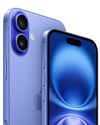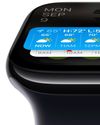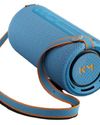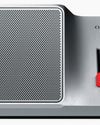Face recognition is standard on all the latest iPhones – and getting smarter

When Apple designed the iPhone X to be ‘all screen’, it created a couple of conundrums. There had to be somewhere to put the front-facing camera, so the notch was born. (Apple is one of several companies that have applied for patents on ways for cameras to shoot through or between pixels, so a truly all-screen phone should be possible one day.)
Meanwhile, the Home button had to be sacrificed, and with it Touch ID. Apple could simply have put the fingerprint sensor somewhere else, but instead it switched to a new method of biometric authentication using a sensor system, built into the notch, that it calls TrueDepth. It’s this hardware innovation that enables the iPhone X, XS, XS Max and XR to support Face ID.
Facial recognition is a staple of science fiction and heist movies, but making it work in real life is hard. Simply picking out a face in the image captured by an ordinary camera would mean anyone who waved a photo of you at your iPhone would be as likely to get into it as you are. Earlier phones, including Samsung’s Galaxy Note 8, could be fooled in this way.
Instead of just taking a picture, TrueDepth detects the three-dimensional shape of your face. The hardware, incorporated into the notch, is made for Apple by the French-Italian semiconductor company STMicroelectronics.
This story is from the {{IssueName}} edition of {{MagazineName}}.
Start your 7-day Magzter GOLD free trial to access thousands of curated premium stories, and 9,000+ magazines and newspapers.
Already a subscriber ? Sign In
This story is from the {{IssueName}} edition of {{MagazineName}}.
Start your 7-day Magzter GOLD free trial to access thousands of curated premium stories, and 9,000+ magazines and newspapers.
Already a subscriber? Sign In

Mac hardware
We help to solve your hardware hassles, from interrupted upgrades to running diagnostics

Give your iPhone a whole new look in iOS 18
Make your iPhone uniquely you

iPhone 16
Apple Intelligence-ready smartphone for the rest of us

Apple Watch Series 10
10th anniversary Watch is now slimmer with an even bigger display

AirPods 4
Apple's most affordable AirPods remain a brilliant buy

We. HEAR Pro
Room-filling sound from this stylish wireless speaker

HiDock H1
An impressive 11-port AI audio dock for conferencers

Adobe Premiere Elements 2025
Create eye-catching videos for sharing on social media

Photoshop 2024
Your imagination is the limit with this AI-powered pixel creator

Wispr Flow
Bring the power of AI dictation to DMs, documents and Discord chats